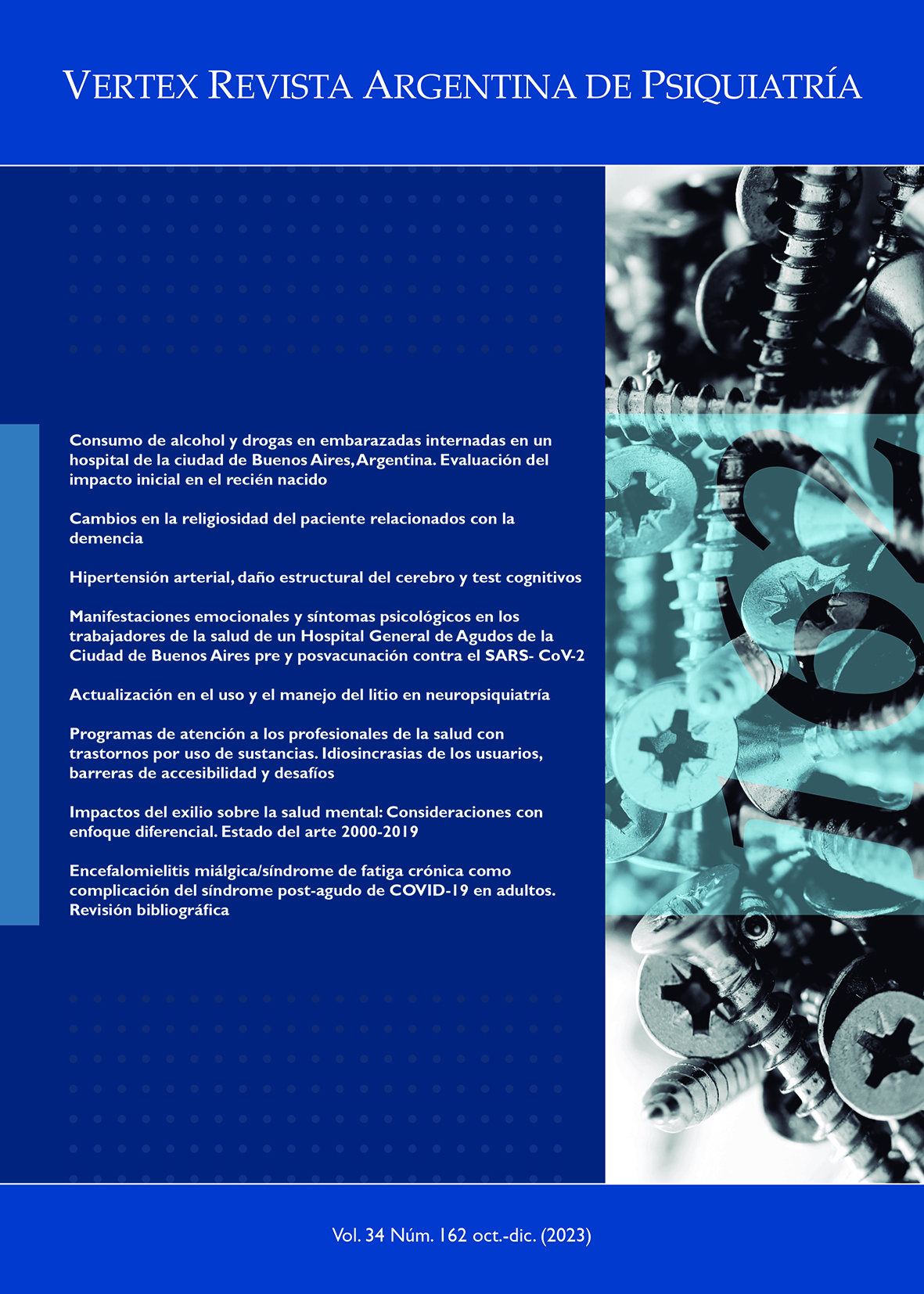Consumo de alcohol y drogas en embarazadas internadas en un hospital de la ciudad de Buenos Aires, Argentina. Evaluación del impacto inicial en el recién nacido
DOI:
https://doi.org/10.53680/vertex.v34i162.500Palabras clave:
Abuso de sustancias, Embarazo, Impacto neonatal, Peso al nacer, Edad gestacionalResumen
Introducción: El objetivo de nuestro estudio fue estimar la prevalencia de exposición prenatal a drogas y el impacto neonatal. Material y Métodos: Estudio prospectivo, observacional, transversal y analítico de embarazadas y recién nacidos ingresados entre marzo y septiembre del 2021. Para estimar la prevalencia de consumo se utilizaron como métodos de detección la encuesta y la detección de drogas en orina materna. Resultados: El consumo de alcohol tuvo una prevalencia del 46.32%, seguido por el tabaco con el 12.12%, la marihuana con el 5.62% y la cocaína con el 4.76%. El peso de los neonatos con madres con orina positiva para alguna sustancia fue significativamente menor que el peso de los neonatos con madres con orina negativa (media ± ES de 2800±184gr vs 3332±41gr y mediana ± DAM de 2950±380gr vs 3385±335gr p 0.002). La edad gestacional también fue significativamente menor en neonatos con madres con orina positiva (38.00 vs 39.00 p 0.002). Si bien la prevalencia de retardo en el crecimiento intrauterino (RCIU), de malformaciones y de prematurez fue superior en aquellos casos con orinas positivas, la diferencia no llegó a ser estadísticamente significativa. Conclusiones: La prevalencia de consumo de sustancias y alcohol durante el embarazo fue elevada con una repercusión estadísticamente significativa en los recién nacidos expuestos tanto para el peso como para la edad gestacional.






